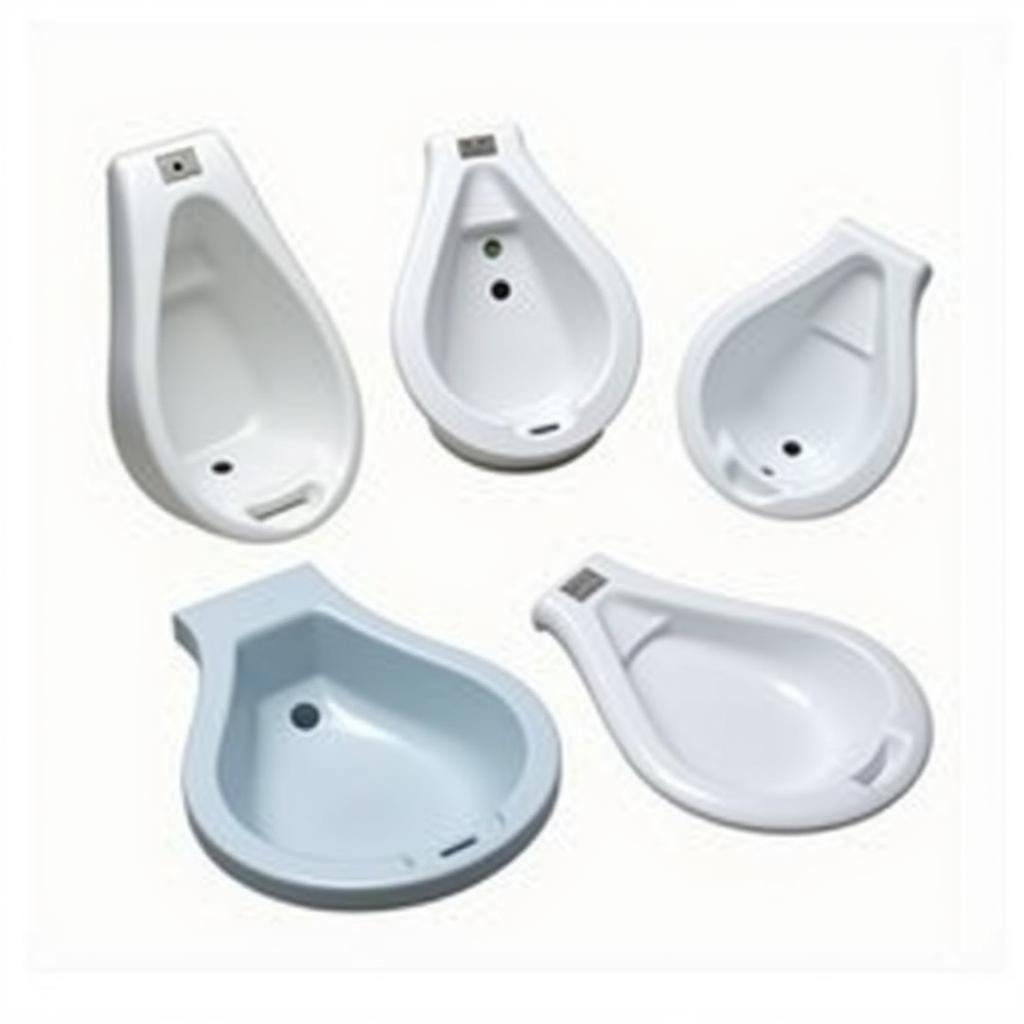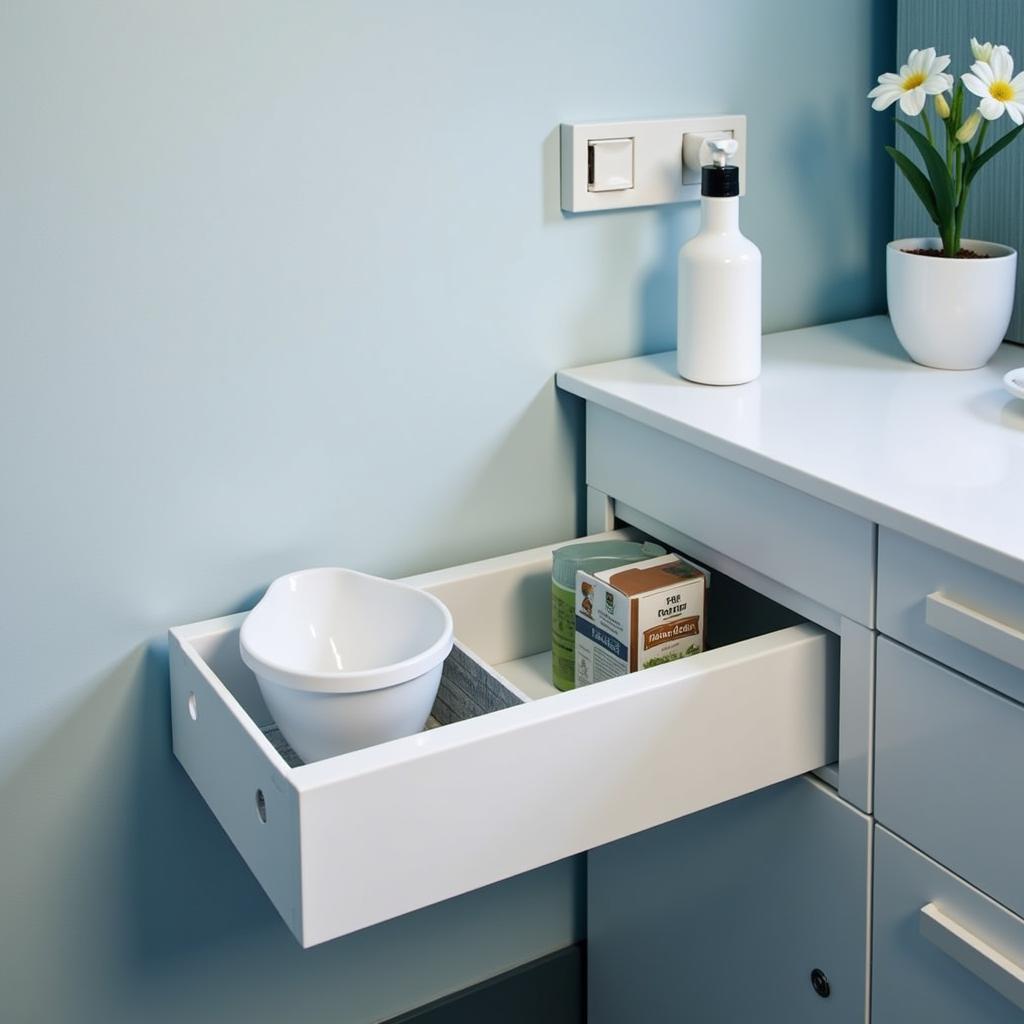Hospital Bed Urinals, also known as male urinals, are an essential tool for ensuring patient comfort and hygiene, particularly for those with limited mobility. These specially designed receptacles allow bedridden patients to urinate without having to leave their beds, preserving their dignity and independence while simplifying the caregiving process.
The Importance of Hospital Bed Urinals
For patients who are unable to easily get out of bed to use a toilet or commode, hospital bed urinals provide a convenient and discreet solution. They are particularly beneficial in cases where:
- The patient is recovering from surgery: Movement can be restricted and painful post-surgery. A bed urinal allows patients to address their toileting needs without jeopardizing their healing.
- The patient has limited mobility: Conditions like arthritis, fractures, or neurological disorders can make walking difficult or impossible. A bed urinal offers a practical solution for maintaining hygiene and independence.
- The patient is incontinent: For patients experiencing incontinence, bed urinals provide a discreet and hygienic way to manage accidents, minimizing discomfort and promoting cleanliness.
Types of Hospital Bed Urinals
Hospital bed urinals are available in a variety of materials and designs to cater to different needs and preferences:
- Plastic: These are the most common type, being lightweight, durable, and easy to clean.
- Metal: Stainless steel urinals offer exceptional durability and are often used in hospitals and care facilities.
- Disposable: Single-use urinals are ideal for travel or situations where cleaning is impractical.
 Different types of male urinals for hospital bed patients.
Different types of male urinals for hospital bed patients.
Choosing the Right Hospital Bed Urinal
Selecting the appropriate bed urinal depends on factors like the patient’s mobility, dexterity, and personal preference. Here’s what to consider:
- Size and Capacity: Choose a size that is comfortable for the patient to use and has sufficient capacity to minimize emptying frequency.
- Shape and Design: Look for features that enhance usability, like a wide mouth for spill prevention and a comfortable grip.
- Material: Consider the durability, ease of cleaning, and patient’s sensitivity to certain materials.
Using and Cleaning a Hospital Bed Urinal
Proper use and cleaning of a hospital bed urinal are crucial for maintaining hygiene and preventing infection:
- Positioning: Ensure the patient is positioned comfortably, either lying down or slightly propped up, to facilitate easy use.
- Emptying and Rinsing: Empty the urinal regularly, rinsing it thoroughly with soap and water or a disinfectant solution as recommended by healthcare professionals.
- Drying and Storage: Allow the urinal to dry completely before storing it in a clean and dry place to prevent bacterial growth.
Enhancing Comfort and Dignity
While hospital bed urinals are primarily functional, there are ways to enhance the experience for patients:
- Privacy: Provide patients with a designated space or cover to ensure privacy during use.
- Warm Water: Using warm water to rinse the urinal after use can offer added comfort.
- Communication: Openly communicate with the patient about their needs and preferences to ensure they feel comfortable and respected.
 Hygienic storage solutions for male urinals in hospitals.
Hygienic storage solutions for male urinals in hospitals.
“Ensuring patient comfort goes beyond medical care; it’s about preserving dignity and providing the necessary tools for self-care,” says Dr. Jane Smith, Head of Geriatric Care at City Hospital. “Hospital bed urinals play a crucial role in achieving this for patients with mobility challenges.”
By prioritizing patient comfort and dignity, healthcare providers can foster a more positive and healing environment. Hospital bed urinals, though often overlooked, are essential tools in this endeavor, promoting hygiene, independence, and overall well-being.
Frequently Asked Questions
1. How often should a hospital bed urinal be emptied?
It’s best to empty a bed urinal after each use and at least every 4 hours to prevent overflow and minimize the risk of infection.
2. Can women use hospital bed urinals?
While typically designed for male anatomy, there are female urinals available that are contoured to fit the female body.
3. Are hospital bed urinals covered by insurance?
Insurance coverage for hospital bed urinals varies depending on the provider and policy. It’s best to check with your insurance company for specific details.
4. What is the best way to clean a hospital bed urinal?
Using a disinfectant solution recommended by your healthcare provider or a mixture of soap and water is effective for cleaning. Thoroughly rinse and dry the urinal after each cleaning.
5. Are there any alternatives to hospital bed urinals?
Depending on the patient’s mobility, alternatives like bedside commodes, portable urinals, or absorbent pads may be suitable options.
For more information on managing incontinence and other related concerns, please refer to our articles on end of hospital bed and hospital urinal for men.
If you have any further questions or need assistance selecting the right hospital bed urinal for your needs, please don’t hesitate to contact us. Our team is available 24/7 to provide support and guidance.
Contact Information:
Phone Number: 02437655121
Email: [email protected]
Address: Số 298 Đ. Cầu Diễn, Minh Khai, Bắc Từ Liêm, Hà Nội, Việt Nam.